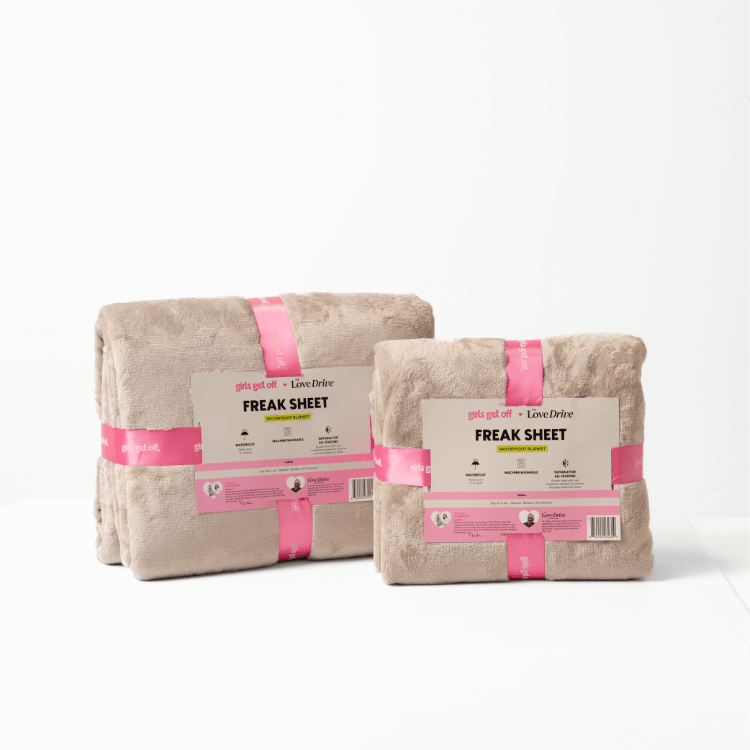We’re going to go on a journey into the wild and wacky world of Condom 101! Now, I know what you’re thinking: “Condoms? Wasn’t that something we learned about in health class in high school?” Well, strap in, because we’re about to take this subject to a whole new level. Whether you’re a beginner when it comes to rubbers or an expert looking for some tips and tricks, this blog is for you. We're getting into the details, the do’s and don’ts, and everything else under the sun. So sit tight and let’s dive into safer, sexier, more satisfying encounters.
1. What are condoms?
Oh, the simple condom—love’s little helper! So what are these enchanted safety sacks? Think of them as your reliable guard against any unpleasant surprises. Condoms are made from various materials like latex, polyurethane or even lambskin for people allergic to latex, and they are basically thin, stretchy pouches that cover the penis during sex. But their main function is to act as barriers that stop different body fluids, such as semen and vaginal secretions, from mixing, hence spreading STIs (Sexually Transmitted Infections) and causing unintended pregnancies.
Wait, wait, wait! It doesn’t end there; condoms aren’t only about being safe: they’re also about having more fun. Yeah, you read that right! These bad boys actually heighten pleasure for all parties involved. How? Well, not only do they lower the chances of contracting STIs or getting pregnant but they also help make sure things stay exciting by reducing sensitivity just enough so that one can keep going strong. Furthermore, with the countless shapes, sizes, textures, and flavours available (yes, even flavours), using a condom can bring an extra level of thrill to your personal adventures, whether alone or with someone else. Remember, though; when unsure, raise high the sheath!
2. How effective are condoms at preventing pregnancy and STIs?
So exactly how good is this rubber at keeping babies from dropping and diseases away? Let’s break it down:
When used properly, condoms are highly effective against preventing pregnancies—98% to be exact! This means if you use them consistently and correctly every time, then only 2 out of 100 couples would have an unplanned child within one year.
But wait, what about sexually transmitted infections? Can you trust these things to protect against those too? Short answer: YES THEY CAN!! While they are not foolproof in terms of stopping STIs altogether, they come pretty close. When used consistently & correctly, condoms greatly reduce the risk of most types of sexually transmitted diseases, including HIV, gonorrhoea, chlamydia & herpes. In other words, whether safeguarding oneself against an unwanted pregnancy or shielding oneself against STIs, condoms are like a Swiss army knife for safer sex—they have got your back covered!
3. What size condom should I use?
Let us dispel one myth right away: there is no such thing as “one size fits all.” Just like people have different body shapes and sizes, so do condoms! And believe me, you do not want to cram into something too tight or float around in something too large. So what’s the perfect fit—finding that Goldilocks of contraceptives?
Well, it all comes down to one thing: girth. You heard me right—size matters! Take a ruler (or a tape measure if you’re feeling fancy) and wrap it around the widest part of your erect penis. Once you’ve got that number, it’s time to hit the condom aisle. Condoms usually come in many sizes, from snug fits for the well-endowed to larger sizes for those who need a little extra space (know what I mean?). So whether you’re packing a pocket rocket or a magic wand, there’s a condom out there with your name on it. Now go forth, my friend, and conquer that condom aisle like the size-savvy superhero you are!
4. Are there different types of condoms, and what are their differences?
Hell yeah, there are different types of condoms! It’s like a buffet out here with something for everyone! So buckle up, because we are about to take you on a quick trip down the condom aisle.
First up are latex condoms, which are like the OGs of all condoms; they stretch well and don’t cost much but most importantly, they work against pregnancy as well as sexually transmitted infections.
And then we have polyurethane condoms if latex ain't your thing (or if you have pesky allergies). These guys are basically just sleeker versions of their big brothers—thinner walls so it feels more real with all safety intact, plus being compatible with any type of lube means variety should spice life too, right?
But wait, let’s not forget lamb skin!! Yes indeed, ladies & gentlemen. Made out of sheep intestines, this natural-degradable option will definitely bring back memories where everything was simple again, except that they only prevent babies, ok? Keep an eye open for those sneaky little STIs now, would ya?
Finally, though not least by any means whatsoever, ribbed textures + dotted surfaces = mind-blowing sensations; flavours ranging from minty fresh breath to sweet nectar. Condoms are like the world’s oyster, so go ahead and create a safer sex experience, my friend. And if that doesn’t work for you, then there are always other ways to make things more fun in bed too!
5. Can condoms affect sensation during sex?
Can condoms ruin all the fun? I mean, let’s be honest—sometimes they’re too much, sometimes they’re too little and sometimes they’re just right. But fear not, because we’re about to get into the nitty-gritty of the condom sensation.
The truth is that for some people, condoms can slightly reduce sensitivity. I know what you’re thinking—putting a layer of latex (or polyurethane or lambskin, if you’re fancy) between you and your partner can take a little getting used to. But here’s the thing: for many folks, the difference is pretty darn minimal. In fact, some people might not notice any change in sensation at all!
But wait, there’s more: condoms don’t just protect—they also enhance. You heard that right! When used correctly, condoms can actually help make it last by decreasing sensitivity just enough to keep things going strong. And with options galore when it comes to textures, shapes and sizes, you can mix it up until you find what works best for you and your partner(s). So while condoms may not be everyone’s cup of tea, think of them as safer sex multitaskers—they've got your back (and front!) in more ways than one!
6. What do I do if a condom breaks during sex? Panic, right?
Hold your horses there! Drop the panic button and take a deep breath. It's totally normal to feel freaked out if a condom decides to throw in the towel mid-coitus but freaking out isn't going to help anybody so what's the plan if you find yourself in this sticky situation? Allow me to break it down:
- Step 1: Stay calm. I know it's easier said than done when your mind is racing a mile a minute but trust me, panicking won’t help anyone—not you, not your partner, not the situation at hand.
- Step 2: Assess the damage. Take a quick peek down south and see what’s what. If the condom has indeed gone kaput, don’t worry—we've got a plan for that.
- Step 3: Stop the action. Yes, you heard me right—hit pause and take a breather. It might not be the most romantic moment but hey, safety first, am I right?
- Step 4: Figure out your next move. Now that you’ve got a handle on things, it’s time to think about what comes next. If pregnancy is on your mind, emergency contraception (like the morning-after pill) might be in order. And if STIs are a concern, it may be worth chatting with your healthcare provider about getting tested.
- Step 5: Take it as an opportunity to grow. Nobody’s perfect and accidents happen but use this as a chance to level up your condom game. Make sure you’re using them right (hint: check the expiration date, use plenty of lube, pinch the tip), and consider adding another method of birth control into the mix for extra peace of mind.
So there you have it, my friend—when it comes to a broken condom, panic is definitely not the answer. Stay chill, stay safe and remember: you’ve got this!
7. Can you reuse condoms? (Spoiler alert: NOPE!)
To put it simply, condoms are not reusable. They are just like disposable cameras in the sense that you can only use them once before disposing of them. You may ask why this is so. Well, for one thing, they stretch and flex, which makes them prone to breaking easily. Additionally, they come into contact with many different types of body fluids—yes, the same ones you would never want swimming around inside another person.
Reusing a condom is not only disgusting but dangerous as well. Consider this: Condoms act as the front line defence against STIs (sexually transmitted infections) and unwanted pregnancies too! Therefore, if you reuse your condoms carelessly or randomly (pun intended), then basically what you are doing is playing roulette with your sexual health and trust me, that’s a game no one wants to win.
In essence, we have had quite a bumpy ride with Condom 101 but fear not because, armed with knowledge, our journeys through safer sex will become easier. We covered everything from what they are made of, their sizes, shapes, etc., all down to how each type is used correctly or incorrectly. Sometimes even funny stories were thrown in between here and there. Now, where were we? Ah yes! Remember, protection does not mean being safe alone but also empowerment and pleasure in taking charge over our sexual lives. Therefore, whether still learning or already mastered, let us continue breaking barriers together while breaking silence too, because when people talk more openly about such things, it helps everybody make informed decisions regarding their own bodies. Finally, let us always strive towards having healthier, more enjoyable experiences during intimate moments.













